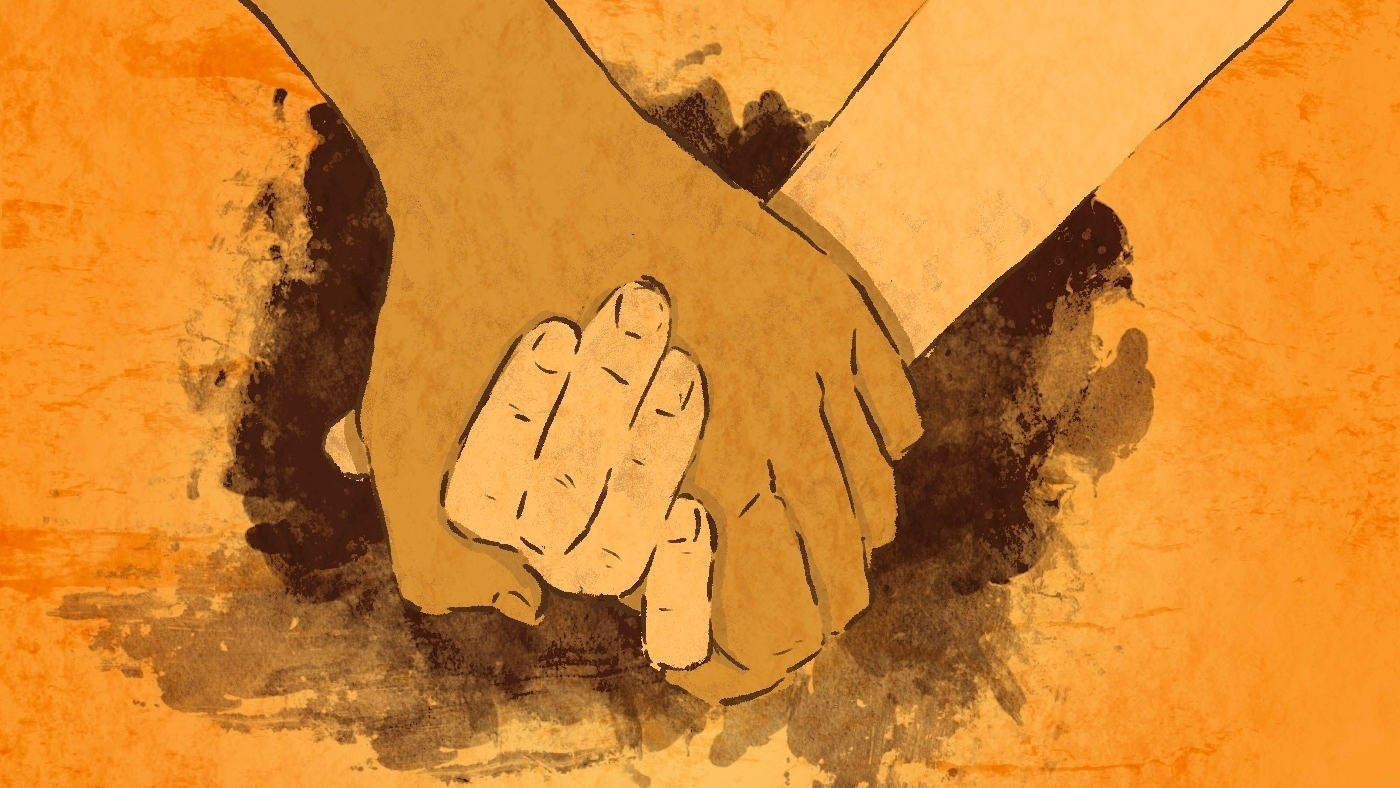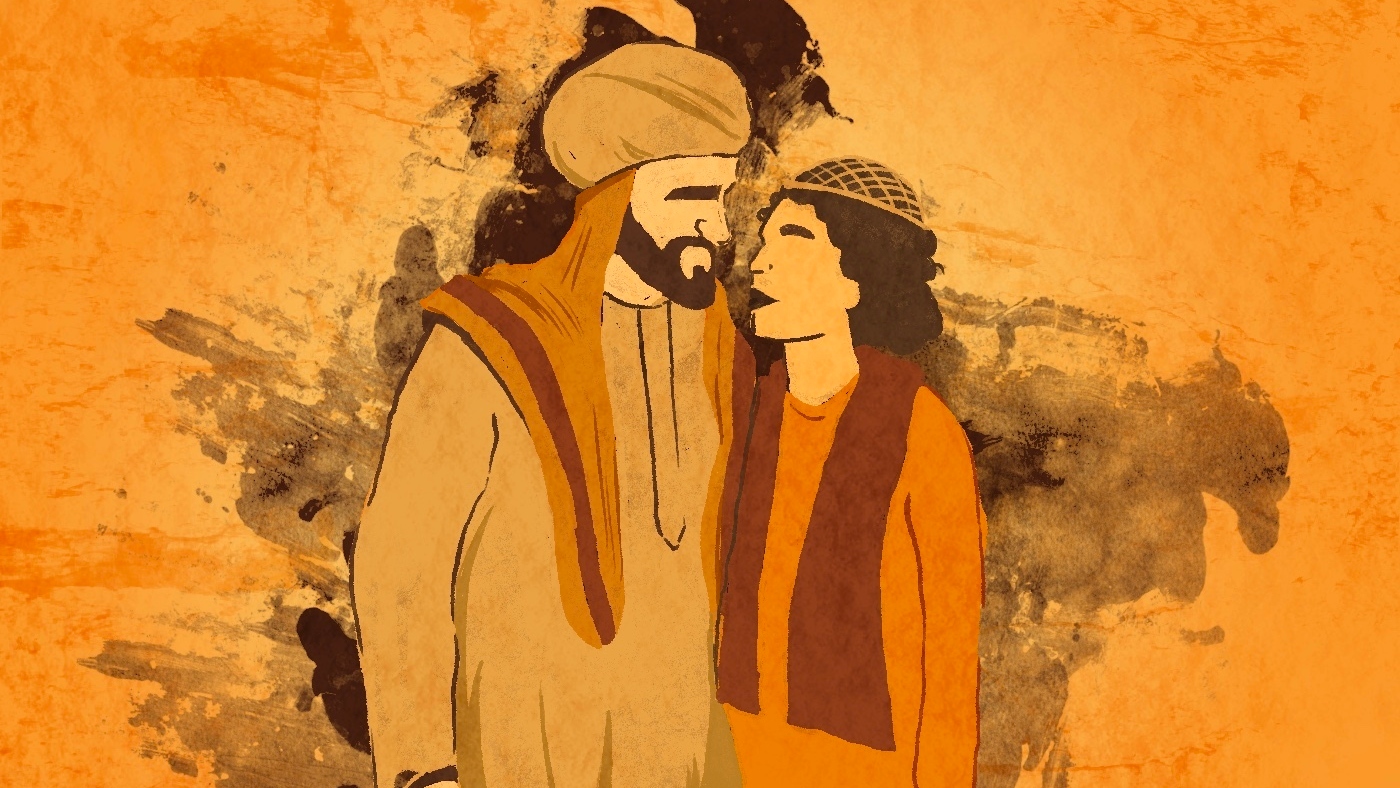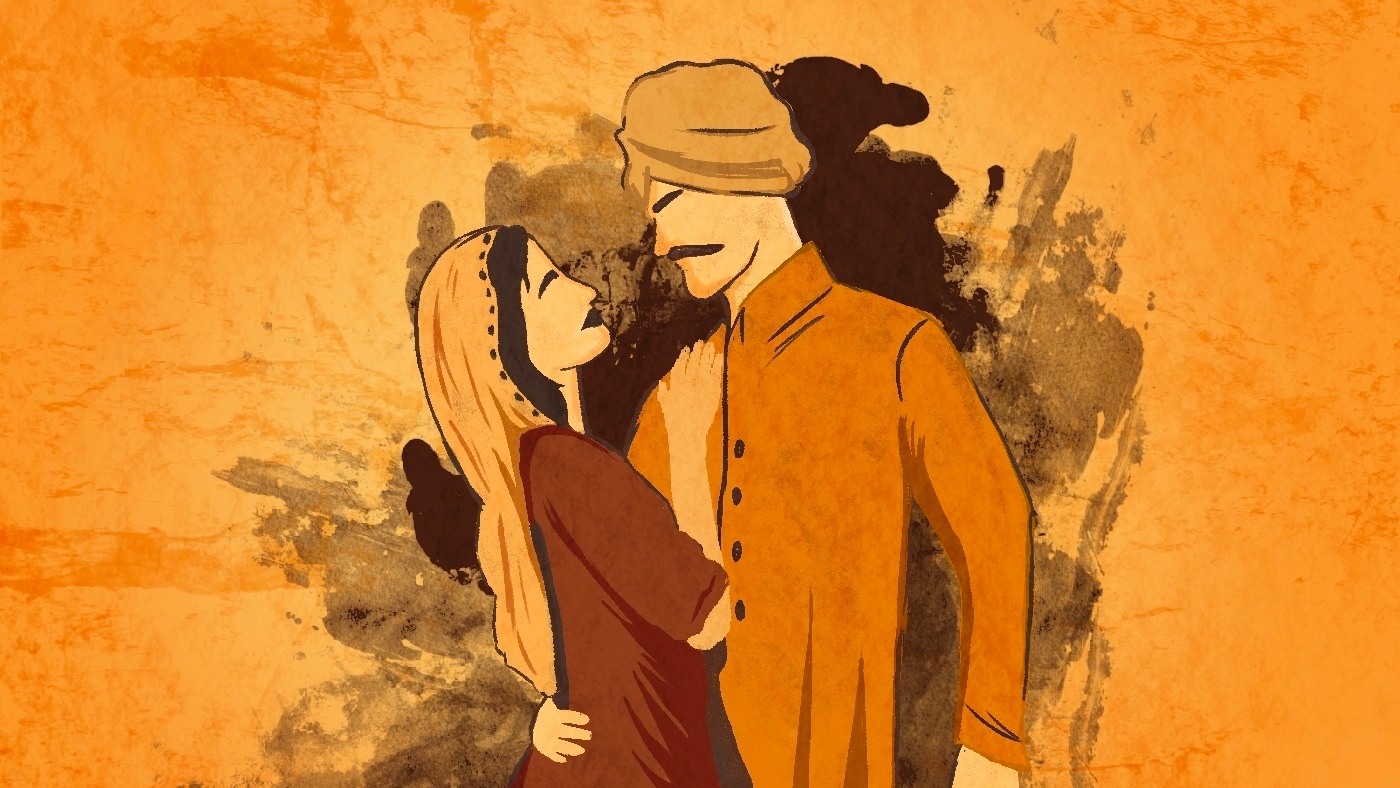Why love always hurts in udhri poetry

Love stories hold a special place in Middle Eastern cultures, often passed down through the generations by word of mouth; they serve a didactic role in the way they teach the listener about the different types of love and importantly, about heartbreak.
In fact, a broken heart is an ending more common than a “happy ever after” in most Arabic language epics, with lovers often kept apart due to tribal rivalries and societal status.
The Arabic language's linguistic depth has played a significant role in enhancing the art of storytelling.
Ancient poets like Imru' al-Qais and Antarah Ibn Shaddad drew on a swathe of poetic imagery that allowed them to describe the various stages of love, vividly painting its associated emotions.
They and other poets of the pre-Islamic period were able to codify the Arabian ideal of romantic love in a way that continues to influence Arab and Muslim poetry today.
New MEE newsletter: Jerusalem Dispatch
Sign up to get the latest insights and analysis on Israel-Palestine, alongside Turkey Unpacked and other MEE newsletters
A distinctive style of love story that emerged in sixth-century Arabia is the udhri style, which later spread across the Middle East and Central Asia with the rise of Islam.
Udhri love stories emphasise notions of honour and chastity in romantic relationships, distinguishing them from typical portrayals of love, which included an erotic element.
While there is no exact English equivalent for udhri love, it has been compared to courtly love in French and old English literature. This concept involved a male suitor expressing unwavering devotion to his beloved, often an idealised version of the feminine archetype, without any expectation of physical intimacy.
In his book, Falsafa al-Hubb ind al Arab (The Arab's Philosophy of Love), the mid-20th century Lebanese writer and philosopher, Abd al-Lateef Sharara, describes udhri love as a “virginal love”, derived from the composition of chaste poetry among Arab tribes.
"Platonic love is pure philosophical abstraction, while udhri love is a socio-historical event that was felt by individual Arab lovers... The former is an idea, while the latter is life, and the difference between idea and life is great,” he writes.
Sufis, known for their spiritual introspection, also contemplated udhri love as a symbol of divine love, associating it with the eternal quest for a deeper connection with God.
Here Middle East Eye looks at three famous stories that typify the udhri genre.
Layla and Tauba
Among the notable examples of udhri poets is Layla Akhyaliyya, a married woman who dared to express her love for a man, who was not her husband, openly through her poetry.
In seventh-century Arabia, public expressions of romantic feelings were considered dishonourable, particularly for women, let alone feelings for another man.
However, Layla Akhyaliyya defied societal norms and openly declared her affection for her lover Tauba al-Humayyir.
The pair had met at the Umayyad court, where Humayyir publicly declared his love for the then unmarried Akhyaliyya.
Angered by his public declaration, Layla’s father married her to another suitor Sawwar Ibn Awfa al-Qushayri.
An inconsolable Humayyir became a su’luk, someone who disavows tribal allegiances and becomes a wanderer.
His travels would bring him back to Akhyaliyya, and the pair would meet and recite odes to one another.
Despite the intensity of their love, Layla and her beloved never acted upon their feelings, and Humayyir remained devoted to Layla throughout his life. Layla continued to express her love for Humayyir through her poetry, even after her divorce from her long suffering husband.
In one account of her death, Akhyaliyya died of grief beside Humayyir’s tombstone.
Fragments of Akhyaliyya's poetry have endured through the ages, preserved in various writings, including Abu Faraj al-Isfahani's Kitab al-Aghani (Book of Songs).
One extract reads:
O eye, weep tears continually flowing,
weep for Tauba in hidden fear;
for a man of Banu Sa'id that I suffer for.
What was it that took him to a stony grave,
from the pure grammar and the rhymes
like spearheads and a thing not shared?
During the seventh century, it was not unusual for women to become poets, but they mostly focused on ritha poetry, which was a form of lament or elegy, often for fallen warriors and usually recited by women to prepare their men for battle.
Tumadir bint 'Amr, better known as Khansa, a poet from the Banu Sulaim tribe and a contemporary of the Prophet Muhammad, was a pioneer in that genre and remains one of the Arab world’s most famous female poets.
The love poem, including the udhri verse, was meanwhile dominated by male poets, who spoke of their heartaches and unrequited obsessions. This makes Akhyaliyya’s achievements in the genre all the more notable.
Urwa and Afra
Of unknown authorship and described as the first tale of udhri love in the Arab world, Urwa ibn Hizam, born in pre-Islamic Arabia, falls in love with his cousin, Afra bint Iqal.
Urwa is sent off to find work and make money by his uncle, Afra's father, after his marriage proposal to her is rejected because he is not considered wealthy enough to marry.
He complies and after several years or labour, he has saved enough for a dowry. However, upon his return instead of finding his would-be bride waiting for him, he is instead shown a grave and told it is Afra's.
The pain of losing his love to death is only amplified when he discovers she is indeed alive, but her family has wed her to another man.
In desperation, Urwa travels to the Levant where Afra now lives with her husband. Upon meeting the man, Urwa introduces himself as a relative and is invited to stay at their home.
A male guest in Arabian tradition is restricted from seeing the women of the household, so to inform Afra of his arrival he throws his ring into a pot of milk that is carried away by a maid, in the hope that Afra will recognise it.
Upon discovering the ring, Afra realises the identity of her mysterious guest and the two find a way to meet, declaring their feelings for one another before Urwa departs carrying Afra's scarf and memories of their fleeting encounter.
Unable to consummate his love for Afra because of her marriage, Urwa pours his heart out into poetry and becomes frail before giving up on life. When she hears about the death of her beloved, Afra too passes away.
Tahir and Zuhre
The influence of udhri storytelling spread beyond the Arabic speaking world to other Muslim groups, including various Turkic people.
One popular Anatolian folk story, exemplifying the udhri genre, is that of Tahir and Zuhre.
The tale begins with a powerful sultan expressing his joy at having everything in life except for the joys of fatherhood, a sentiment understood by his childless vizier.
They decide to seek the help of a magician to have children and heirs to their wealth and lineages.
The magician gives them an enchanted apple to share, assuring them that they will both be blessed with offspring. The sultan's child would be named Zuhre, and the vizier's son would be called Tahir. However, the pair are warned that Tahir and Zuhre must never be separated.
As promised, the children are born, but as they grow up and fall in love with each other, tragedy strikes and keeps them apart.
In different versions of the tale, various obstacles emerge: an heir to the dynasty opposes their marriage and attempts to separate them, a man named Karadiken falls in love with Zuhre and tries to sabotage their relationship, or Zuhre's mother deems Tahir unworthy of her daughter, believing that a sultan's daughter should only marry another royal.
Tahir is imprisoned in a palace dungeon in Mardin but after several years manages to escape and returns to Konya, only to discover that it is Zuhre's wedding day.
Tragically, palace guards find Tahir and kill him before Zuhre, still dressed in her wedding attire, can reach him.
Like other heartbroken characters featured here, Zuhre also dies of grief and is buried alongside her beloved.
Their love story has inspired centuries of Turkish language poets, including the 20th century writer Nazim Hikmet.
Middle East Eye delivers independent and unrivalled coverage and analysis of the Middle East, North Africa and beyond. To learn more about republishing this content and the associated fees, please fill out this form. More about MEE can be found here.







